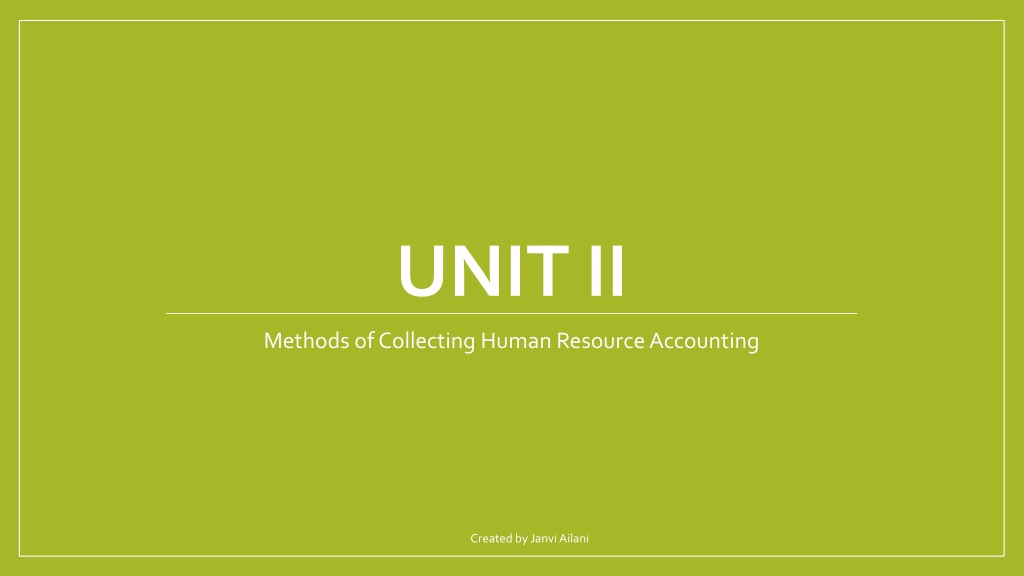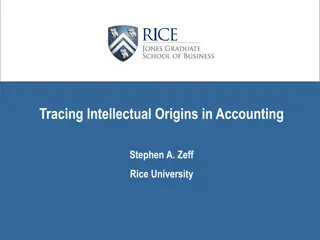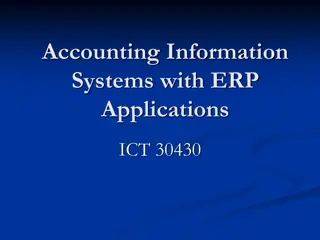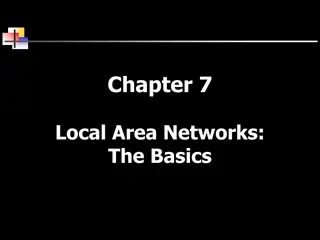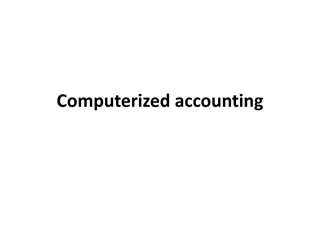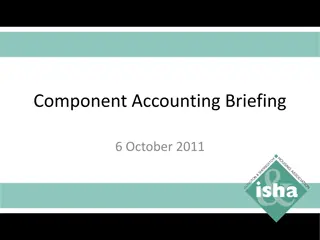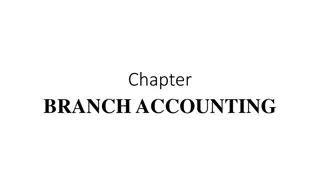Methods of Collecting Human Resource Accounting and Their Advantages and Disadvantages
Explore various methods of collecting Human Resource Accounting (HRA) information like Cost of Production Approach, Capitalized Earning Approach, and more. Delve into the advantages and disadvantages of using Historical Cost Approach, Replacement Cost Model, and Opportunity Cost Model in HRA management.
Download Presentation

Please find below an Image/Link to download the presentation.
The content on the website is provided AS IS for your information and personal use only. It may not be sold, licensed, or shared on other websites without obtaining consent from the author. Download presentation by click this link. If you encounter any issues during the download, it is possible that the publisher has removed the file from their server.
E N D
Presentation Transcript
UNIT II Methods of Collecting Human Resource Accounting Created by Janvi Ailani
Methods of HRA Cost of Production Approach Capitalized Earning Approach Historical Cost Model Economic Value Model Replacement Cost Model Capitalization of Salary Opportunity Cost Created by Janvi Ailani
Historical Cost Approach Also known as conventional accounting Given by Rinses Likert Valuation and recording in the books of accounts Cost of Recruiting, hiring, training, socializing, developing an employee are capitalized and written off over the period for which the employee remains with the firm. Created by Janvi Ailani
Advantages of Historical Cost Approach Traditional Accounting Actual transactions Significant Role Legal Recognition Less costly Simple to use Easy to Understand Reliable method Created by Janvi Ailani
Disadvantages of Historical cost method Fixed Unrealistic Depreciation Decline in the value of Money Outdated Figures Overstatement of Figures Misleading operational levels Incomparability Created by Janvi Ailani
Replacement Cost Model The value of employee is estimated as the cost of replacement with a new employee of equivalent ability and efficiency. It includes: 1. Individual Replacement Cost 2. Positional Replacement Cost Created by Janvi Ailani
Advantages of Replacement cost model Easy to operate Realistic Logical Costs Involved Created by Janvi Ailani
Limitations of Replacement Cost Model Limited Utility Subjective Nature Increased Cost Unfavorable attitude of employees Costly Inefficiency Differs from person to person Created by Janvi Ailani
Opportunity Cost Model 1st advocated by Hc Kiman and Jones. Value of a foregone activity or alternative when another item or activity is chosen. Value of an asset when there is an alternative use of it. No opportunity cost for those employees that are not scarce and top executives. It includes financial or non- financial benefits Created by Janvi Ailani
Advantages : Awareness of Lost Opportunity Easy Bidding Process Relative Price Created by Janvi Ailani
Disadvantages: Time Lack to Accounting Lowers Morale Inaccurate Restricted in nature. Created by Janvi Ailani
Capitalized earning Approach To determine the value of an organization by calculating the net present value(NPV) of expected future profits or cash flows. Capitalized Earnings= Future earnings Capitalization Rate(cap rate) It looks at Current cash flow, annual rate of return and the expected value of the business. Created by Janvi Ailani
Economic Value Model Measures the performance of a firm s measurement in creating value for the shareholders. Developed by Stern Steward and Co. A firm should deduct cost of equity capital from the accounting profits to arrive at a value which is actual wealth created for investors. Created by Janvi Ailani
Advantages of EVA: Simple Motivation to managers Easy to Calculate Decision making Quality Growth Informational Effective Measure Created by Janvi Ailani
Disadvantages of EVA: Time Lack of Accounting Lowers morale Inaccurate Restricted in Nature Created by Janvi Ailani
Capitalization of Salary Present value of total future earnings of employees is estimated. Productivity of an employee is measured with the experience and age. Capital discounting techniques to be used to arrive at the value of total human capital. Created by Janvi Ailani
Advantages: Focus on present value Homogenous group Linked productivity Created by Janvi Ailani
Disadvantages Inaccurate data Insufficient data No uniformity Created by Janvi Ailani
Statutory Provisions Governing HR Accounts It refers to the legal framework within which organizations must operate. Statutory Compliances Required for Indian Payroll 1. Statutory Requirements for minimum wages 2. TDS deduction 3. Statutory Compliances for ESI funf and PF deduction 4. Professional Taxes 5. Gratuity 6. EDLI 7. Created by Janvi Ailani
HRA practices in India Before Liberalization HRA was not adopted. After Liberalization, HRA was still overlooked due to abundant manpower available at low cost At present Companies started investing in Human resources. Various mal practices in recruitment of workers and payment of wages led to industrial disputes . The Royal Commission of India in 1931 has imposed many rules. Service sector understood the importance of its employees. In India HRA has still not got significant position Created by Janvi Ailani
Contd Indian Companies Act does not provide any guidelines for reporting of HRA in financial statements. Public sector firms such as BHEL, ONGC, Mineral and metals Trading Corporation have started disclosing information on human resources in their statements. Created by Janvi Ailani
Thank You. Created by Janvi Ailani
